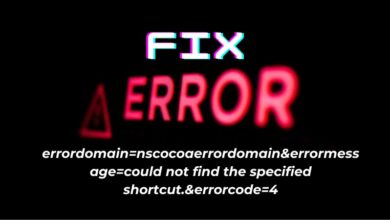3 Relaxation Techniques for a Stress-Free Life

Table of Content
Stress is a common challenge in today’s fast-paced world, but it doesn’t have to take over your life. Effective relaxation techniques can be a game-changer for your mental and physical health. This detailed guide delves into three potent methods: mindfulness meditation, deep breathing exercises, and the use of cannabis for relaxation.
Mindfulness Meditation
Mindfulness meditation isn’t just a practice; it’s a way of being. This technique involves being fully present in the moment and accepting it without judgment. It’s about noticing your surroundings, your emotions, and your thoughts, and letting them exist without resistance.
A Comprehensive Guide to Practicing Mindfulness
- Choose Your Meditation Spot: Find a quiet, comfortable place where you can relax without interruption. This could be a dedicated meditation corner in your home or a peaceful spot in nature.
- Determine the Duration: Beginners should start with short sessions of 5 to 10 minutes. As you become more comfortable with the practice, you can gradually increase the duration.
- Adopt a Comfortable Position: Whether you’re sitting on a cushion, chair, or lying down, ensure your posture is relaxed yet attentive.
- Focus on Your Breath: Pay attention to the natural rhythm of your breathing. Feel the air entering and leaving your body, and the rise and fall of your chest or abdomen.
- Acknowledge Wandering Thoughts: It’s natural for your mind to wander. Acknowledge these thoughts without judgment and gently redirect your focus back to your breathing.
- End Your Session Gently: When your meditation ends, open your eyes slowly. Take a moment to notice your environment before getting up.
Practicing mindfulness can extend beyond dedicated meditation sessions. It can be integrated into daily activities like eating, walking, or even during work. The key is to remain fully present and engaged in the current activity, observing every aspect with attention.
Deep Breathing Exercises
Deep breathing exercises are a cornerstone of stress management and relaxation techniques. Often overlooked due to their simplicity, these exercises are powerful tools in regulating the body’s response to stress and anxiety.
When we engage in deep breathing, we activate our body’s natural relaxation response. This response is part of the parasympathetic nervous system, which helps counteract the stress response. Deep breathing exercises have been shown to decrease stress hormones, lower heart rate, and reduce blood pressure, thereby improving overall mood and reducing anxiety levels.
To fully harness the benefits of deep breathing, it’s important to understand and practice various techniques:
- Diaphragmatic Breathing: This is the foundation of all deep breathing techniques. Lie down or sit in a comfortable position. Place one hand on your belly and the other on your chest. Inhale deeply through your nose, ensuring that your diaphragm inflates enough to create a stretch in your lungs. Your chest should move only slightly, while your abdomen rises. Exhale slowly and steadily through your mouth. This technique helps enhance lung efficiency and oxygenates your blood.
- 4-7-8 Breathing Technique: Developed by Dr. Andrew Weil, this technique is particularly effective in reducing anxiety and helping with sleep. Start by emptying your lungs of air. Breathe in quietly through the nose for 4 seconds, hold the breath for a count of 7 seconds, then exhale forcefully through the mouth, pursing the lips and making a “whoosh” sound, for 8 seconds. Repeat the cycle up to four times.
- Box Breathing: Also known as square breathing, it’s a technique used by Navy SEALs to remain calm and focused. Inhale through your nose for 4 seconds, hold the breath for 4 seconds, exhale through your mouth for 4 seconds, and then hold again for 4 seconds. This method is excellent for concentration and focus, especially in high-stress situations.
One of the great advantages of deep breathing exercises is their versatility – they can be practiced anywhere and at any time. Incorporating these exercises into your daily routine is simple and can yield significant benefits:
- Morning Routine: Start your day with a few minutes of diaphragmatic breathing to awaken and energize your body.
- Stressful Moments: When you feel stress building up during the day, take a short break for 4-7-8 breathing to reset your stress levels.
- Before Sleep: Practice box breathing before bed to calm your mind and promote restful sleep.
- Incorporate into Activities: Deep breathing can be integrated into other activities such as walking, stretching, or yoga for enhanced relaxation.
Cannabis as a Relaxation Technique
The use of cannabis as a relaxation aid is becoming increasingly accepted and researched in the medical community. Compounds found in cannabis, such as THC (Tetrahydrocannabinol) and CBD (Cannabidiol), are known to interact with the body’s endocannabinoid system. This interaction can have several effects, including reduced anxiety, improved mood, and enhanced feelings of relaxation. THC is the main psychoactive component, known for its “high,” while CBD is non-psychoactive and is often associated with calming and therapeutic benefits.
For many, the process of growing cannabis can be a therapeutic journey in itself. Cultivating your own plants allows you to understand and appreciate the source of your relaxation aid. It provides a sense of control over what you consume, ensuring that you use a product that is as pure and effective as possible.
The foundation of a successful cannabis grow starts with selecting the right seeds. When choosing seeds, consider factors like the strain’s growth characteristics, yield potential, THC and CBD content, and suitability for your growing environment. Reputable seed banks like Zamnesia or dispensaries are reliable sources of quality seeds. For relaxation purposes, Indica strains are often recommended due to their sedative and calming effects, as opposed to Sativa strains, which are typically more energizing.
Growing cannabis requires a basic understanding of horticulture. Key aspects include:
- Lighting: Cannabis plants require adequate lighting to grow. Indoor growers often use LED or HPS (High-Pressure Sodium) lights.
- Soil Composition: Good quality soil ensures healthy plant growth. Cannabis thrives in well-draining, nutrient-rich soil.
- Watering Techniques: Cannabis plants need a balanced watering schedule. Over or under-watering can affect plant health.
- Climate Control: Maintaining the right temperature and humidity is crucial, especially for indoor growing.
Always be aware of the legal status of cannabis cultivation in your area to ensure you’re compliant with local laws.
Conclusion
Adopting these relaxation techniques can lead to a significant reduction in stress and an overall improvement in quality of life. Whether through the calming practice of mindfulness meditation, the physiological benefits of deep breathing exercises, or the controlled use of cannabis, each method offers a unique approach to achieving peace and tranquility. Consistent practice and finding the right balance for your lifestyle are key to reaping the full benefits of these techniques.
Embrace these methods and embark on a journey toward a more serene, stress-free life. Remember, managing stress is not about completely eliminating it from your life, but about learning how to respond to it more effectively. These techniques offer a pathway to do just that, helping you to navigate life’s challenges with greater ease and resilience.




